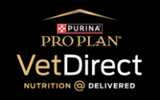
As the effects of Coronavirus have disrupted corporate pork production, we have seen an influx of feeder pigs in our area being purchased from producers down east. It is important to remember that these specific pigs have been genetically selected over the years to thrive best in a swine barn. They can adjust to other conditions, but the stress of weaning and traveling a few hundred miles, running through a sale, and landing in a backyard often results in immuno-compromised animals that are more likely to become severely ill.
If you are buying these animals, please quarantine them away from your other animals for 3 weeks. Disinfect your boots, use separate buckets and shovels for the new pigs and your current ones. Clean and disinfect or use different boots and coveralls before entering their pens to avoid exposing them to germs from your animals. Avoid interacting with your other animals afterward. Droopy ears, poor appetite, lethargy, diarrhea, and fever over 102 are all early signs of an issue and warrant a call to the veterinarian. Pigs should be provided a shelter, fresh water, and a diet appropriate for their size and age. Take care to slowly introduce small amounts of water the day you bring them home as they can become ill if they over-consume water after a period of time without having it in transport. Baby pigs 25-100 lbs can eat a 18% protein starter-grower ration, then transfer to a 16% protein grow-finisher diet around 100 lbs until processing. These pigs can adjust, but they need a few weeks to make this big transition.
We have compiled a list of references to help with managing these pigs. Authors are credited on each individual document.

 Phone: (828) 738-3883 | Fax: (828) 270-3213 Email:
Phone: (828) 738-3883 | Fax: (828) 270-3213 Email: